These are two Paleolithic female figurines made from a bone splinter of an ox or horse. Both are without facial features and have different stylistic characteristics.
Of the two specimens, the larger has two parallel and curvilinear incisions on the neck and chin which seem to represent a collar or a hood; the shoulders are sloping and continue into the arms that join under the prominent belly; all the anatomical details are well highlighted, in particular the two breasts are rendered with two furrows, the pubis and the rear are rendered with extreme realism and the legs are truncated at the knees.
The second statuette is smaller in size, with a spindle-shaped profile, a rounded head and a furrowed neck; the arms join under the belly with the indication of a few fingers, the breasts are pendant and oval, the belly is flat and the buttocks are just mentioned; the lower part is tapered and ends in a sort of hook, a detail that made us think it was a pendant.
The detail of the arms along the sides and the hands joined under the belly brings to mind some specimens of Siberian statuettes, suggesting the same stylistic convention.
Inside the cave were also found: about 400 artifacts of art on stone and bone fragments, many of which date back to the Paleolithic, about 18.000 fragments of pottery dating back to a period between the Neolithic and the age of bronze and the remains of a burial of a man and a woman of Cromagnon, complete with grave goods.
As regards the movable art finds, most of them have a geometric decoration formed by bundles of parallel lines, dotted bands, scalariform motifs, a grid enclosed in large bands or free, meanders and curvilinear ribbon motifs; sometimes traces of ocher are preserved among the engravings.
Also with regard to the burials, abundant traces of ocher have been found to indicate that the bodies were placed on this substance or that they were widely sprinkled with it; the deposition is bisoma, dated to the ancient Epigravettian, which took place in a natural ellipsoidal pit, thus exploiting the course of the soil; the burial was certainly damaged during the Neolithic when part of the skeletons was removed; the kit returned only a pebble painted in ocher and about thirty perforated deer canines also stained in ocher, placed in a double row and located near the point where the head of the female individual was found, therefore it is hypothesized that these could have made up the headdress. The Grotta delle Veneri, which takes its name from the two statuettes found inside (previously known as Grotta Nicola Fazzu), is located in Monaci about 2 km north-west from the Municipality of Parabita; it is formed by a large natural cavity of karst origin and develops for a total length of over a hundred meters in the limestone. The cavity can be divided into two sectors: the external shelter-cave, the result of the progressive retreat of the vault which generated an open environment with a roughly circular plan and where the enormous collapsed boulders that sealed the prehistoric stratigraphic series are clearly evident; the internal cave, which in turn can be divided into a central trunk and two tunnels that develop towards the North and towards the West.
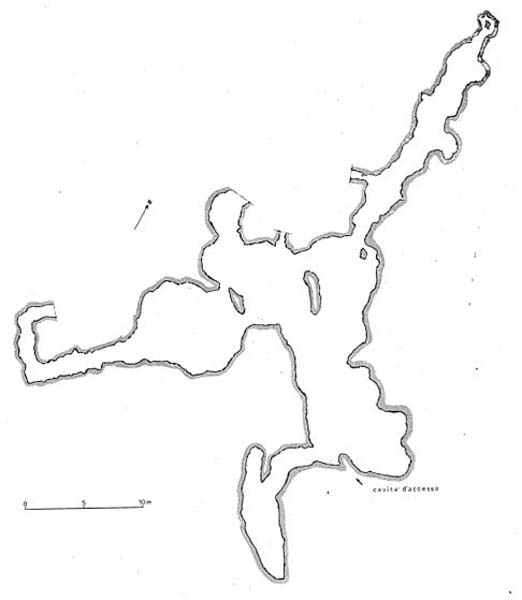
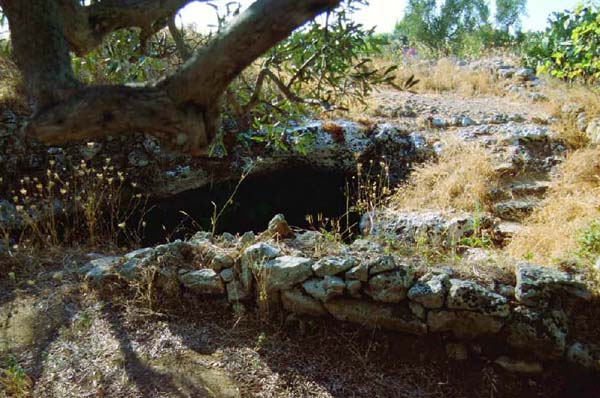
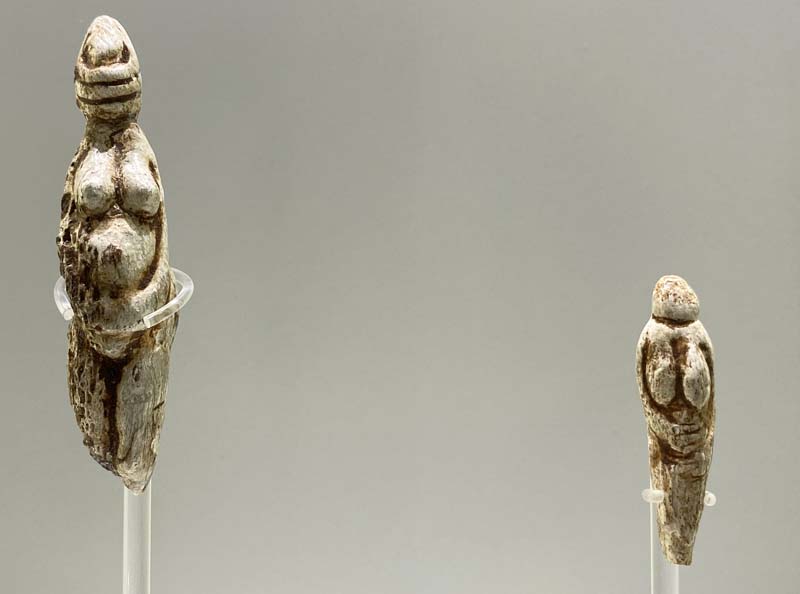
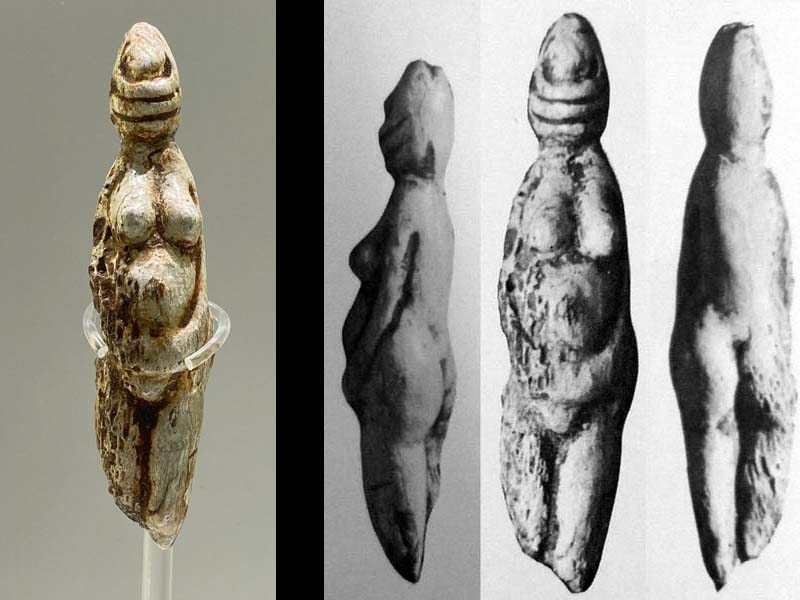
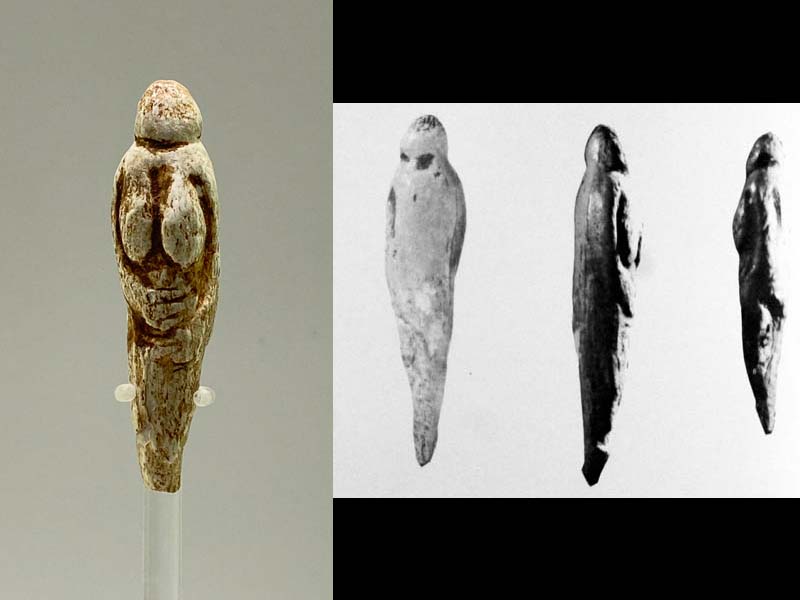
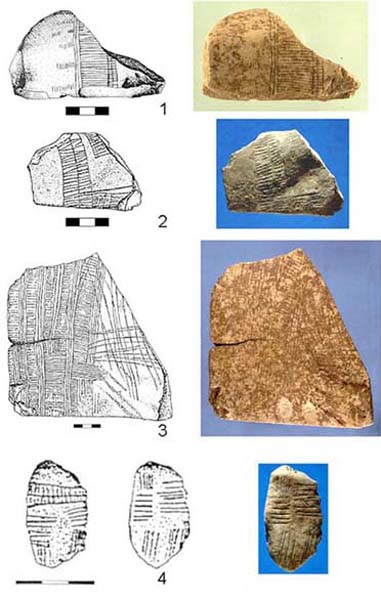
Historical notes
The figurines were found in 1966 during the excavations commissioned by Prof. Giuseppe Piscopo of the Salento speleological group. From the previous year the professor, together with other scholars, decided to conduct a research campaign in various caves of Salento, from Capo di Leuca to the Neretina coast; on August 14 of that year, Piscopo together with his colleague Antonio Greco, penetrated the first part of the cave, immediately realizing the importance of the discovery.
The second part of the cave was inaccessible, blocked by boulders and dirt, therefore they opened a regular work site in order to determine the age and facies of the cave with certainty. There were many successive excursions which made it possible to collect evidence from various eras, from the Paleolithic to the Neolithic. For various reasons, the actual excavations were only promoted in 1966, initially commissioned by Piscopo himself; the searches also involved the second part of the cave, where various artifacts were found including the two statuettes. The scientific interest was so great that in May of the same year, on behalf of the Institute of Human Anthropology and Paleethnology of the University of Pisa, in collaboration with the Superintendency of Antiquities of Taranto and the Speleological Group of Maglie, the first real campaign of excavations in the cave with funds made available by the University of Pisa. In September of the same year the municipal administration of Parabita purchased a portion of land on which the entrance to the cave stood, in order to allow regular and free access to scholars. During 1968 an excavation campaign began by the University of Pisa which continued throughout the 70s and led to the discovery of numerous finds. Many materials were brought to Pisa to be studied and cataloged, finds that returned to Lecce in April 2014, currently deposited at the University of Salento, waiting for the studies and valorisation of the same to be continued with appropriate funding.
CARD
LATEST PUBLISHED TEXTS
VISIT THE FACTSHEETS BY OBJECT

